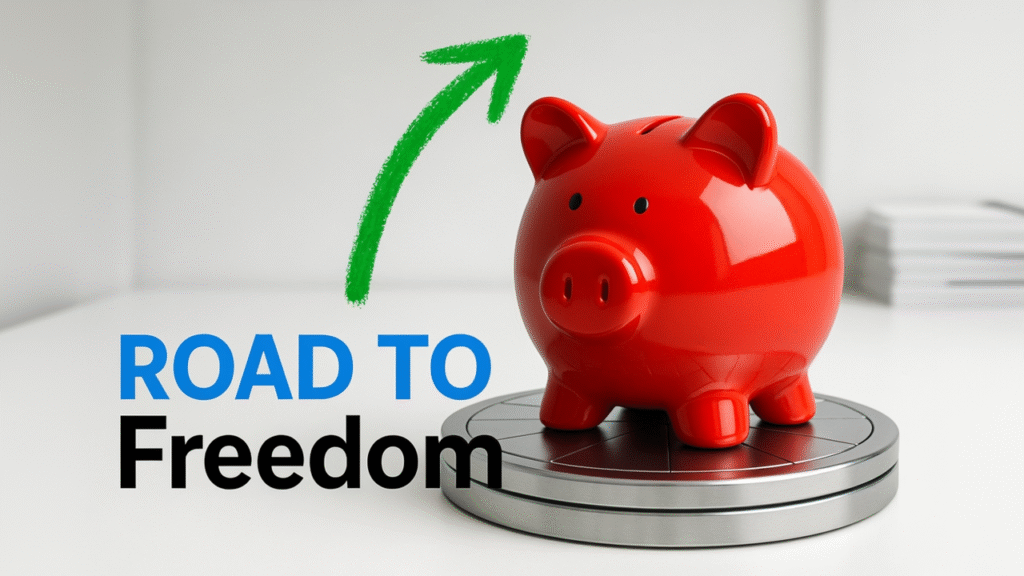
Welcome to LearnWithArhin.com, where we empower you to take control of your finances and build a life of abundance. In 2025, approximately 60% of Employees are still living paycheck to paycheck. Even with low unemployment and steady wages, you’re not alone. But the good news? It’s not a life sentence. This article, inspired by our latest YouTube video, provides a step-by-step guide to breaking free. We’ll also draw on timeless financial principles Let’s turn stress into security and dreams into reality.
Escape Paycheck-to-Paycheck Living: Your Roadmap to Financial Freedom in 2025
The Paycheck-to-Paycheck Trap: Why It’s Happening and How to Escape
In 2025, surveys shows that around 60% of employees are caught in this cycle. It’s not just low-income households; even those earning over GHS100,000 fall victim to lifestyle inflation, unexpected costs, and high-interest debt. The result? Constant anxiety, no emergency buffer, and deferred dreams.
But financial freedom isn’t about cutting out all joy—it’s about smart habits that help you keep more of what you earn and grow it. This guide covers six essential steps: knowing your numbers, saving first, tracking expenses, reviewing progress, investing wisely, and boosting income. Implement these, and you’ll build wealth that works for you.
Step 1: Know Your Income and Expenses – Build a Solid Foundation
You can’t fix what you don’t measure. Start by calculating your net income (after taxes) and listing all expenses—fixed (rent, utilities) and variable (groceries, entertainment).
Adopt the 50/30/20 rule: 50% on needs, 30% on wants, and 20% on savings and debt repayment. With 59% of employees unable to cover a GHS1,000 emergency (per recent surveys), awareness is crucial. Review your last three months’ bank statements to spot leaks, like GHS50/month in forgotten subscriptions—that’s GHS600/year you can redirect.
Tools like Mint or YNAB (You Need A Budget) or simply an excel make this easy by automating tracking. You can start by categorizing everything to identify patterns and cut waste without feeling deprived.
Step 2: Pay Yourself First – Automate Savings for Scalable Growth
Treat savings like your top bill. Automate 10-20% of every paycheck into a separate account—using a percentage ensures it scales with raises, avoiding lifestyle creep.
Build an emergency fund for 3-6 months’ expenses to eliminate the fear of derailment from one bad month. If debt is an issue, prioritize high-interest ones (like credit cards), but still save a bit—habits matter. This buffer is your first line of defense against financial shocks.
Step 3: Keep Records of Expenses – The Power of Daily Tracking
Tracking isn’t exciting, but it’s transformative. Log every expense via apps that categorize food, transport, and more. Note the “why” behind spends to uncover emotional triggers, like stress eating or impulse buys. This daily habit reveals hidden patterns and empowers better decisions. Combine it with mindfulness to avoid common pitfalls, ensuring your money aligns with your goals.
Step 4: Review Progress Regularly – Adjust and Celebrate Wins
Set aside time monthly to compare actual against your budget, calculate your savings rate, and tweak as needed. Quarterly, assess net worth for a bigger picture.
Experts recommend clear goals, like “Save GHS5,000 by year-end,” to stay motivated. If you slip, forgive yourself and adjust—consistency compounds small wins into major progress, like handling emergencies without credit.
Step 5: Invest Your Savings – Let Your Money Multiply
Saving protects; investing grows. Once your emergency fund is solid, move excess into investments. Start simple with low-risk options like government T-bills or fixed deposits, then explore mutual funds after research.
Compound interest is magic: GHS200/month at 7% return will hit GHS100,000 in 20 years. In 2025, the FIRE (Financial Independence, Retire Early) movement is thriving—consider dividends or rentals for passive income. Educate via books like “The Richest Man In Babylon.”
Remember, investing is about owning your future, not gambling.
Step 6: Earn More Income – Unlock Unlimited Potential
Cost-cutting has limits, but income doesn’t. Negotiate raises, upskill on Coursera, or launch side hustles like freelancing, ridesharing (Uber), or Etsy sales. 2025’s gig economy is booming, with AI-related gigs and content creation on the rise.
Direct 50% of new income to savings to prevent spending it all. A 10-20% earnings boost will double your savings rate, accelerating freedom. Pair this with investing for exponential growth through passive streams.
Conclusion: Start Your Financial Freedom Journey Today
You’ve got the roadmap: Know your numbers, pay yourself first, track and review, invest smartly, and earn more. It’s not instant, but consistent action compounds—like interest on your savings.
Define your “why”—early retirement, family security, or travel—and start with one step, like downloading a budgeting app. For more, watch the video above or subscribe to our newsletter for free resources.
What’s your first action? Share in the comments below—we’d love to hear your story and support your journey at LearnWithArhin.com!


